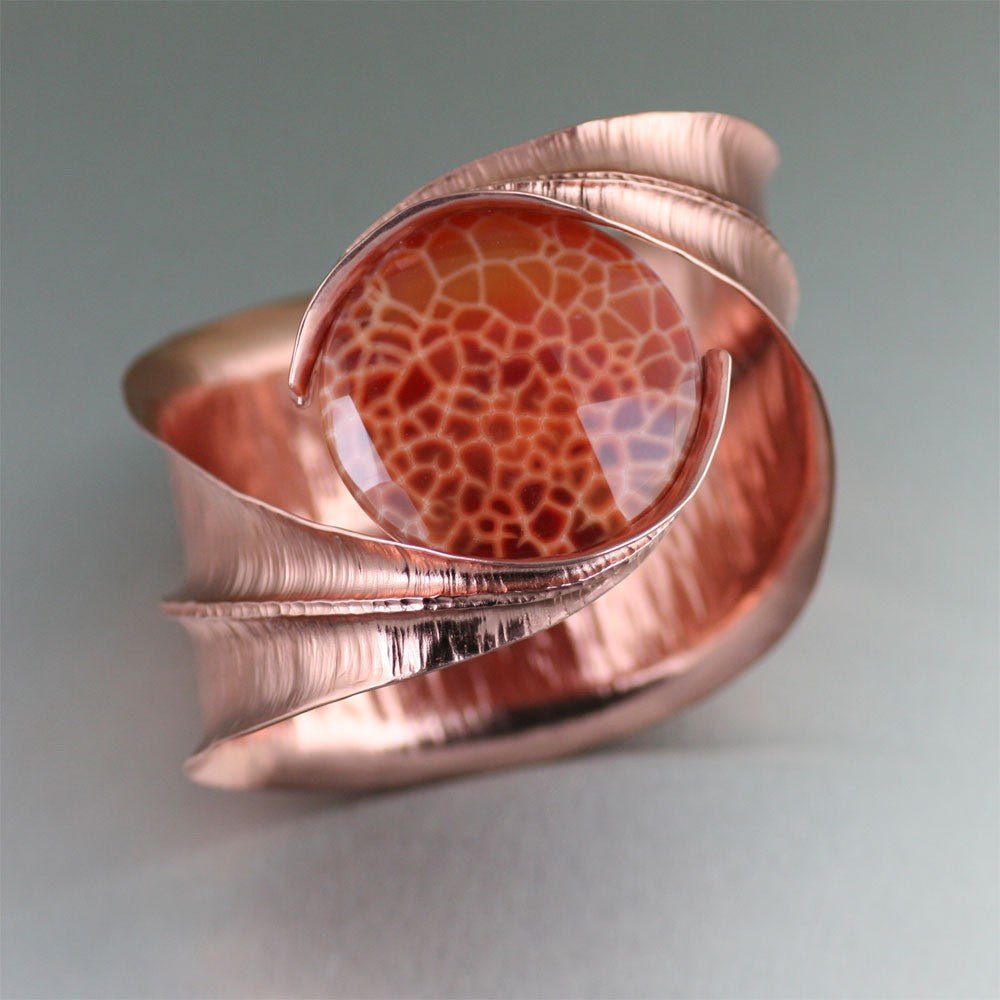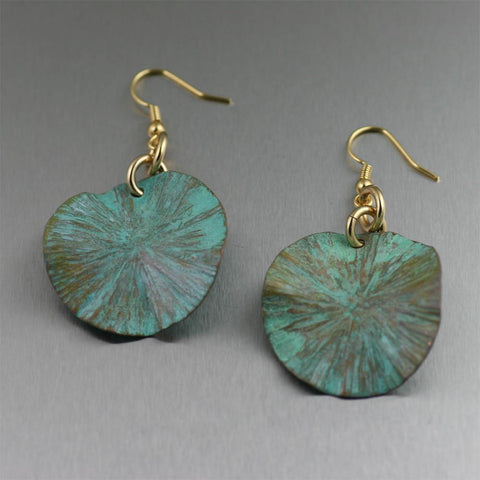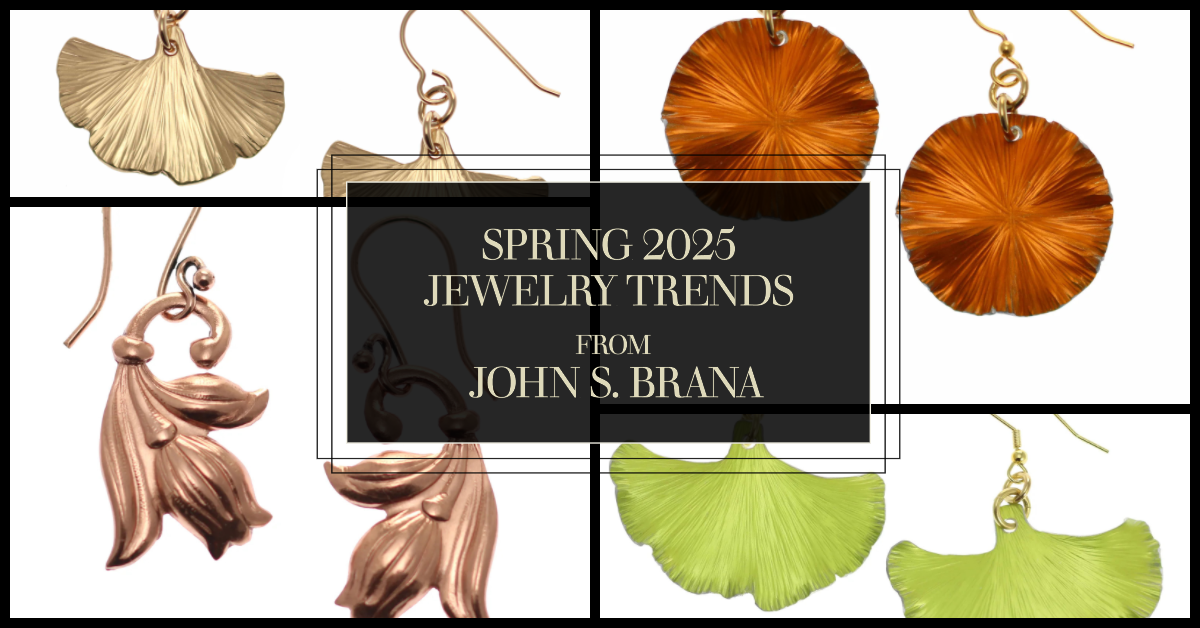Can You Tell the Difference Between Truly Handmade Jewelry and Manufactured Jewelry?

Jewelry is an essential accessory for every fashionista, and its origins can be traced back to ancient civilizations. In the age of mass production, distinguishing between handmade and manufactured jewelry is more critical than ever. This comprehensive guide will help you discern the differences and understand the value of true craftsmanship. Follow along, and let's dive into the fascinating world of jewelry!
The History and Evolution of Handmade and Manufactured Jewelry: From Ancient Art to Modern Marvels
Traditional Craftsmanship in Jewelry Making
Handmade jewelry has been around since time immemorial, reflecting the creativity and artistry of various cultures. From the intricate beadwork of ancient Egypt to the stunning filigree of the Victorian era, handmade jewelry showcases the skill and dedication of the artisans.
The Impact of Modern Manufacturing Techniques on the Industry
With the advent of industrialization, jewelry production underwent a significant transformation. Modern machinery allowed for the mass production of consistent and uniform designs, making jewelry more affordable and accessible. However, this shift also diminished the exclusivity and charm of handmade pieces.
How to Spot the Difference: Key Factors to Consider When Examining Jewelry
Examining the Construction of the Jewelry
Components, Findings, and Textures: Observe the intricacies and details of the jewelry. Handmade pieces typically display slight variations in design, while manufactured items boast identical construction. Handmade jewelry is typically not identical to other pieces of the same design or collection. It is very rare to find an identical matching set of earrings.
If the piece has been hammered or a texture is present, usually there are slight variations that the eye can pick up. This isn't so with manufactured jewelry. It is often easiest to examine jewelry that has considerable decoration -- many aspects. Start by looking at how the piece is constructed. Look at the components, findings, prongs, earwires.
Consistency and Uniformity in Design: Assess the uniformity of multiple pieces in a set or collection. Handmade jewelry usually lacks perfect symmetry, whereas manufactured pieces feature flawless replication. Machine made jewelry allows today's manufacturer the capability to routinely produce uniform quality jewelry designs while keeping jewelry affordable than most hand-casting and fabricating processes would allow.
Casting machines now quickly process into uniform molds such components as metals, plastics, and resins, allowing even elaborate jewelry designs to be created with speed and uniformity for many jewelry manufacturers. Mechanized punch presses and forges are also employed by many jewelry manufacturers to simulate a handmade effect. Hand-hammered texturing is one of the more "handmade" looks generated by this method, making the production consistent and highly profitable to the manufacturer.
Looking for the Designer's Hallmark
Artisan Signatures and Reputation: Examine the jewelry for an artisan's signature, which can indicate the quality and authenticity of the piece.
Indication of Quality and Craftsmanship: Authentic handmade jewelry should be made to last, with the creator's dedication and skill evident in its construction. Some handmade, traditional-style jewelry appears less perfect than machine-made jewelry, although high-quality handmade jewelry should nonetheless be made to last, and this should be apparent in the details. Perhaps surprisingly, machine-made jewelry often breaks more easily than well-made handmade jewelry. Much of the mass-produced jewelry sold today as "handmade" may indeed be handmade, for example in department stores, but that does not necessarily mean it is of the highest quality.
More often than not, most mass-production jewelry facilities operate on a quota system that incentivizes speed, resulting in short-cuts and lower quality jewelry. Look for handmade jewelry that is not mass-produced -- not available in large quantities. If you are looking for high-quality handmade jewelry in San Francisco, look for the artisan's name attached to the piece. This represents both reputation and quality. The careful observer will always be able to appreciate the uniqueness and quality of a handmade piece of jewelry. With handmade artisan jewelry, quality and uniqueness are typically are apparent to even the most casual observer.
Assessing the Personal Touch and Uniqueness of the Jewelry
Individuality and Personal Style: Handmade jewelry reflects the artist's unique vision, while mass-produced items cater to a broader audience. Handmade jewelry offers the pleasure of unique, often rare designs, that are not-identical, typically made by a true artist, with great love and passion. Crafting well made and designed jewelry is an art form. This love of one's work and the art of design comes across in the finished piece. Mass-produced jewelry is just "soulless." One's personalized style, taste, individuality, and identity can be conveyed by and is better reflected by wearing jewelry that is handmade.
Emotional Connection with Handmade Jewelry: Handcrafted pieces often carry the artist's passion and love, fostering a personal connection between the wearer and the creator. If you purchase mass-produced, your "look" can look mass-produced! Mass-produced jewelry can certainly be less expensive to purchase, as it is definitely less expensive to make, but it's not necessarily less expensive to purchase. Regardless, mass-produced jewelry usually brings with it no special meaning or history -- no story, no life. When you wear beautiful handmade jewelry, it is a pleasure to be able to explain to admirers the actual story or history behind what you are wearing, or information about the artist, which is often possible with handmade jewelry bought from individual artisans or their representative galleries. Simply put, handmade jewelry is a joy to wear!

Pros and Cons: Weighing Your Options for Handmade and Manufactured Jewelry
Handmade Jewelry
Pros:
- Unique and one-of-a-kind designs
- Greater attention to detail and quality
- Supports independent artisans and their craft
- Environmentally friendly and ethical production
Cons:
- Often more expensive due to the time and effort involved
- Limited availability of designs and collections
Manufactured Jewelry
Pros:
- More affordable and accessible to a wider audience
- Consistent quality and uniform designs
- Faster production and availability
Cons:
- Lacks the unique charm and individuality of handmade pieces
- Mass production may result in compromised quality and ethics
A Step-by-Step Guide to Identifying Handmade and Manufactured Jewelry
-
Examine the Components: Look closely at the elements of the jewelry, such as the findings, prongs, and earwires. Handmade pieces often display subtle variations in construction.
-
Check for the Designer's Hallmark: A signature or artisan's mark is a strong indicator of handmade jewelry, reflecting the creator's reputation and dedication to quality.
-
Assess the Uniqueness of the Piece: Handmade jewelry is typically distinct and original, with variations in design and detail, while manufactured pieces showcase uniformity and consistency.
-
Evaluate the Texture and Finishing: Handmade jewelry often features hand-hammered textures or hand-applied patinas, which can differ from the machine-made finishes found in mass-produced items.
-
Research the Brand or Designer: Investigate the background and practices of the jewelry's creator to ensure their pieces are genuinely handmade and adhere to ethical production standards.
Caring for Handmade and Manufactured Jewelry: Keep Your Treasures Shining
Maintenance Practices for Different Types of Jewelry
- Store in a clean, dry place to prevent tarnishing and damage
- Use a soft polishing cloth for gentle cleaning
- Avoid exposure to chemicals, such as perfumes and cleaning agents
- Remove jewelry before swimming or bathing
Manufactured Jewelry:
- Follow the manufacturer's care instructions
- Use a jewelry cleaner specifically designed for the materials and finishes
- Keep stored separately to avoid scratches and damage from other pieces
Ensuring Longevity and Preserving Value
- Regularly inspect your jewelry for signs of wear or damage
- Have your pieces professionally cleaned and serviced periodically
- Consider insuring valuable or sentimental pieces to protect against loss or theft
The Role of Certifications and Ethical Considerations: Making Conscious Choices
Fair Trade and Ethical Sourcing in the Jewelry Industry
- Prioritize jewelry made from ethically sourced and sustainable materials
- Look for fair trade certifications or membership in responsible jewelry organizations
- Consider the environmental impact of mining and manufacturing practices
Impact on Quality and Social Responsibility
- Handmade jewelry often adheres to higher standards of quality and ethics
- Supporting fair trade and ethical practices contributes to the well-being of artisans and their communities
Key Takeaways: What You Need to Remember
- Handmade and manufactured jewelry each offer distinct advantages and drawbacks, depending on individual preferences and values.
- Identifying the differences between the two types involves examining construction, hallmark, and personal touch.
- Handmade jewelry often provides greater attention to detail, unique designs, and ethical production.
- Proper care and maintenance can ensure the longevity and preservation of your jewelry, regardless of its origin.
In conclusion, understanding the differences between handmade and manufactured jewelry enables you to make informed decisions and appreciate the value of true craftsmanship. By supporting handmade artisans and making conscious choices, you can elevate your personal style and make a positive impact on the world of fashion.
Click Here to Read "Nu-Gold Jewelry - An Economical Alternative to Karat Gold Jewelry"
John Brana
Author
John S Brana, based in San Francisco, is the founder of John S Brana Handmade Jewelry and President of Galleria NuVo, Inc. with over two decades of expertise in crafting distinctive handcrafted pieces. Transitioning from a finance and banking career in 2004, John manages everything from design to marketing. His modern, urban-inspired creations have graced fashion editorials, resonating with stylish, adventurous enthusiasts who value exquisite craftsmanship and luxury. Every piece narrates a distinct tale, mirroring the wearer's individuality.
Also in Jewelry News Blog
Recent Articles
-
8 New Bronze Earring Designs for Spring 2025
Published date:March 08, 2025
-
15 New Jewelry Designs for Spring 2025
Published date:February 27, 2025
-
5 Best Copper Earrings for 7th Anniversary Gifts
Published date:February 08, 2025
-
Dazzling Statement Necklaces for Elegant Occasions
Published date:January 27, 2025
-
Affordable Handmade Earrings Under $50
Published date:January 16, 2025
-
Best Handmade Earrings in Stylish Copper
Published date:January 14, 2025
-
Top 10 Best Selling Copper Jewelry for 2024 from John S. Brana
Published date:December 24, 2024
-
Enchanted Winter: John S. Brana's Dazzling 2025 Jewelry Collection
Published date:December 08, 2024
-
Earthy Elegance: Unleash Your Style with Copper Cuff Jewelry
Published date:November 22, 2024
-
Copper Earrings and Beyond Jewelry Trends for Fall 2024: What’s Hot and How to Wear It
Published date:September 26, 2024







